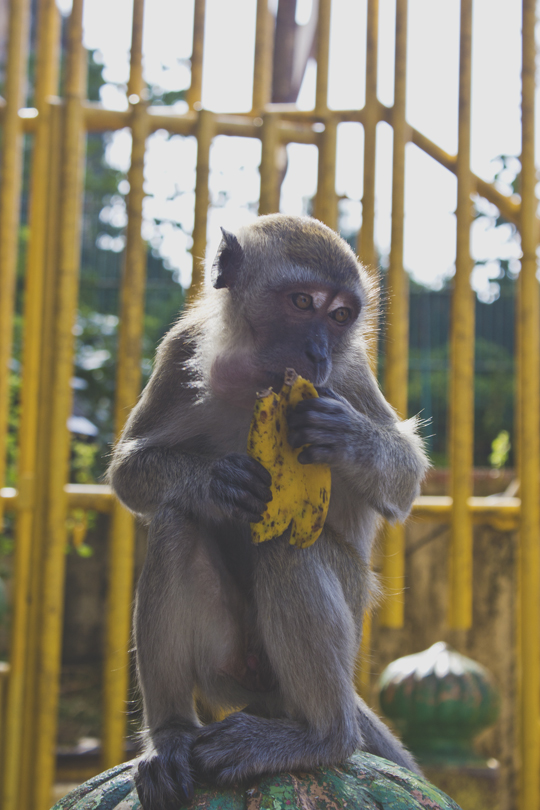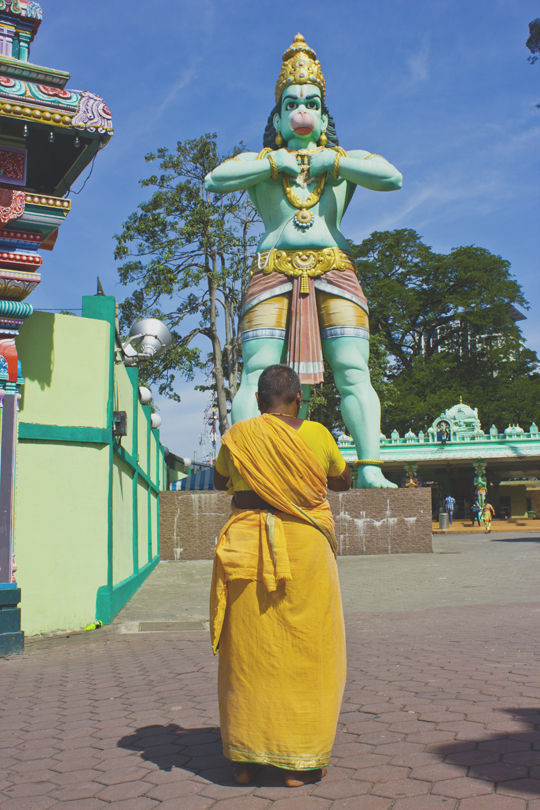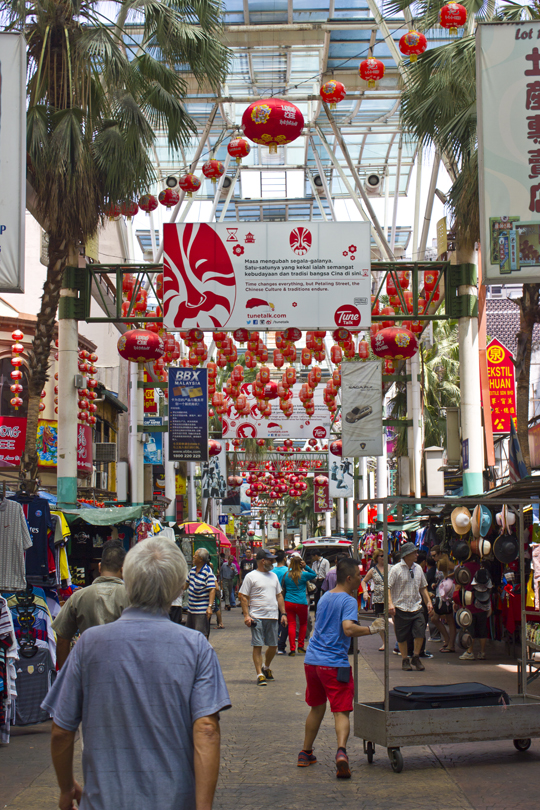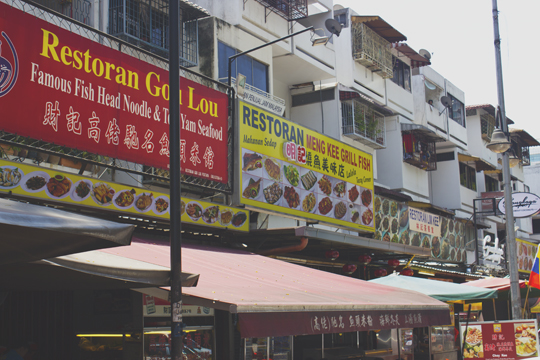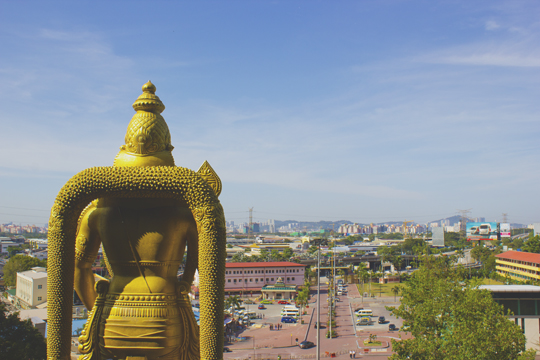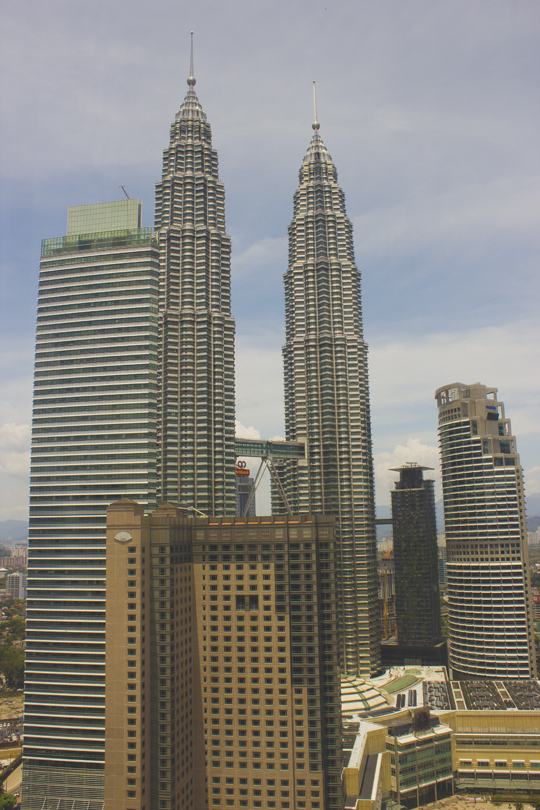 After a memorable trip in the perfect Singapore, and the spiritual Bali, and before heading home, we made a quick stop in Kuala Lumpur, capital of Malaysia.
After a memorable trip in the perfect Singapore, and the spiritual Bali, and before heading home, we made a quick stop in Kuala Lumpur, capital of Malaysia.
It’s the biggest city in the country, the cultural and economical center, and where the King’s residence is located, the Istana Negara Palace.
History
Kuala Lumpur seems to be dated from 1850 when the Malayan chef of Kelang, Raja Abdullah, hired workers to open tin mines.
They made it in the confluence of Sungai Gombak (or Sungai Lumpur – meaning muddy river) and Sungai Klang. Kuala Lumpur means “muddy confluence”.
Malaysia was a British colony for around a century, and has also been under Japanese domain, was once preocupied with communism, but it is independent since 1957, and Kuala Lumpur is the capital since 1963.
Kuala Lumpur is formed by the mix of different cultures. Different from the rest of Malaysia, where the Malays are the majority, at Kuala Lumpure the majority is of Malay-Chinese. There are also Malay-Indian, Europeans and other indigenous races.
The city hall is in charge of the administration, which on its turn responds to the Malaysia’s Federal Ministry.
– Official Language: Malay, however, English is spoken quite a lot.
– Religion: Islam is the most practiced one, there are others like Buddhism, Cristianity and Hindu.
– Currency: Malay Ringgit (MYR) – 1€ = 4,44305 MYR
– Climate: Warm and humid throughout the year, with rains that can go from March to May and September to November. We were there in early March and the climate was perfect, hot and almost without rain!
– Vaccination: Not necessary (to the Portuguese).
– Passport: As usual, the presentation of a passport with 6-month validity is mandatory.
– Visa: We don’t need a visa (Portugal), unless you want to stay more than 90 days.
– How to get there: We flew, as usual, with Emirates. Porto-Lisbon (TAP); Lisbon-Dubai; Dubai-Singapore (Changi Airport), then leaving for other destinations, but is possible to fly directly from Dubai to Kuala Lumpur with Emirates. In our case we arrived from the Ngurah Rai airport in Bali, with an AirAsia flight, which connects the entire Asia to the Malaysian capital, to the International Airport of Kuala Lumpur, in the district of Sepang, at around 50km from the center of the city, this flight took around 3h.
All the main aviation companies fly regularly to Kuala Lumpur.
– Time zone: + 8h (in comparison with Portugal)
– Transportation: Kuala Lumpur is served by all kinds of public transportation, the most used being the train and bus. Uber is also available in the city, but is not advisable to use it from the airport (you’ll understand why soon!).
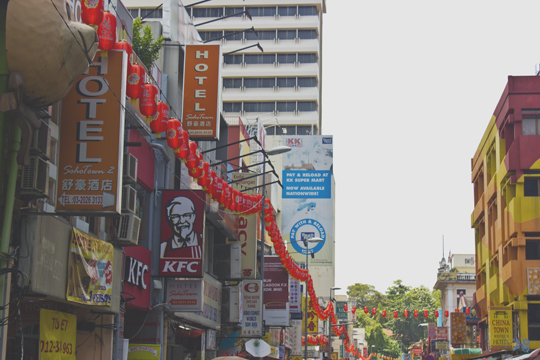 Kuala Lumpur was just a pit stop before heading back to Portugal, but since we were there we decided to take the most out of it.
Kuala Lumpur was just a pit stop before heading back to Portugal, but since we were there we decided to take the most out of it.
We chose the imposing Grand Hyatt Kuala Lumpur (see) to be our home, and in the few hours around the city we opted to go discovering and visit some important spots.
Therefore, the question is, what to do in Kuala Lumpur in just 24h?
Wandering around town without destination was an option, but there were a few places I liked to see. So, we saw two of those, the Batu Caves and Chinatown.
Yes, the Petronas could also be an option, but Grand Hyatt was located right in the financial district, or as they call it, Golden Triangle, and our room had a priviledged view to the Towers and that was enough for me.
Even because the most interesting part of the Petronas is the view they offer to the entire city. Aside from that they’re just two giant towers of 452 meters of height. For sure at night, when fully illuminated, they’re a true megalomaniac piece of art that completely steals our attention!
Well, but speaking of our short time in Kula Lumpur, let’s say it didn’t start the best way!
We arrived to Kuala Lumpur at night, and once the airport is far away from the city center we called an uber – fundamental error – never do it!
We entered the car, confirmed the address of the hotel and ten seconds ahead we were stopped by a police officer. Well, after a conversation with our driver, that obviously we didn’t understand, he asks for our passports! The passport is something we never separate from in a trip! Right?
Nobody said anything… We didn’t understand a thing… the panic began to install itself!
Finally (after a few seconds that seemed eternal!) we were informed by the police we couldn’t call ubers in the airport, that is was illegal, forbidden, etc etc! Ultimately, we could use the Uber in the city but at the airport we could only use taxis or bus. And so we went by taxi, paying ten times more, but well, we arrived in a piece without confusions!
That day, after this jumpy start and a travel of almost 1h to arrive at the center of Kuala Lumpur, we just wanted some sleep, and fortunately Grand Hyatt took really good care of us!
 The so deserved bed at Grand Hyatt after our adventure
The so deserved bed at Grand Hyatt after our adventure
After a beautiful night of sleep and a delicious breakfast we went, this time by Uber (!) in a 15 min trip to the Batu Caves.
Batu Caves
Arriving we can see, far away, the imposing and giant (43m of height) golden statue of Murugan – the Hindu God of War.
Maybe the most astonishing moment of the visit to the Batu Caves is the fact of seeing this majestic figure oposing to the naturalness of the caves with almost 400 million years!
In the end, this place is the mix of a religious temple with the rocky formations cut by nature for millions of years.
 But this place wasn’t always this sacred, it was once just the provider of guano – bird faeces – for the people to use as fertilizer, but it was thanks to an Indian devotee that from the XIX century on this was seen as a sacred place capable of attracting believers from all around the world.
But this place wasn’t always this sacred, it was once just the provider of guano – bird faeces – for the people to use as fertilizer, but it was thanks to an Indian devotee that from the XIX century on this was seen as a sacred place capable of attracting believers from all around the world.

The complex of the caves includes temples, altars, museums and a kind of zoo. And to enjoy all of this prepare yourselves to climb 272 steps!
At the entrance we are presented with a true Hindu museum at open sky, different divine figures welcome us to this true monument of nature that are the Batu Caves.
The entrance at the complex and climbing the stairs is free, if you opt to visit the Dark Cave and the Natural History Gallery you have to pay – between 35 to 80 MYR, depending if you want the educational visit or the adventure one – here you’ll have the chance to do a guided visit to the interior of some of the caves and see unique species of several types, from plants to insects and birds (mainly bats). We didn’t go, because aside from me not dealing well with very humid and dark places, the pictures outside of spiders and insects we could find inside, totally destroyed any curiosity I could have!

This place is on the second floor of the huge staircase.
On the third and last floor there’s a temple, some altars and hindu figures and some religious souvenirs commerce.
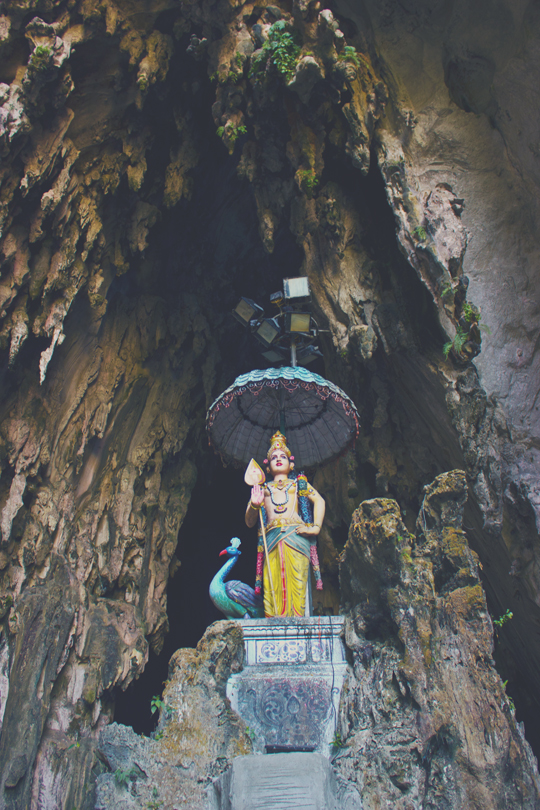 Important:
Important:
– Women can’t enter with short clothes, they must cover their lower members with a scarf or a sarong.
– Careful with the monkeys, there are hundreds of them around the complex! They’re aggressive and steal everything they find!
I must confess I expected more of this place, from the imposing looks of its exterior, with a perfect fusion of spirituality with nature, climbing dozens of stairs, what we find in the caves does not meet the initial amazement.

I can’t quite explain why, it doesn’t give me a feeling of purity and true spirituality. Maybe it was me that couldn’t connect with the place…
After this visit it was time to go to the other place I wanted to see, Chinatown. We took the train to the KL Central station (cheap and organized) in a short travel that took us right to our destination (public transportation works very well in the city). The station is next to the Batu Caves, to the right when leaving the complex. Along the walk to the station is possible to grab something to eat or drink.
Chinatown
A city worth of the name must have a Chinatown, mostly when that city has such a strong Chinese culture like Kuala Lumpur.
So, Chinatown transports us to an environment full of colour, light, crazyness, noise (lots of it) and so so many replicas!!
This is one of the most important regions in the city and is always full of people, tourists and locals.
The region offers us lots of temples, markets, restaurants, stores and allows us to find basically everything to every taste.

Some of the most interesting places are the Central Market – where you find one of the most important focus of the artistic comunity, promoting traditional crafts and best defining the Malaysian traditions (some consider the Central Market as part of Chinatown, due to being so close, and some don’t); the imposing Sri Mahamariamman – the main Hindu temple of Kuala Lumpur; and the Malaysia Heritage Walk – one of the main streets that is basically an outdorrs market.

Besides these places there are lots of other temples, stores and markets, just do like us, walk around, explore it, no rushes. Animation is a constant and you can do some shopping!
I liked Chinatown but I didn’t find it very traditional, just an infinity of stores selling replicas of several products!
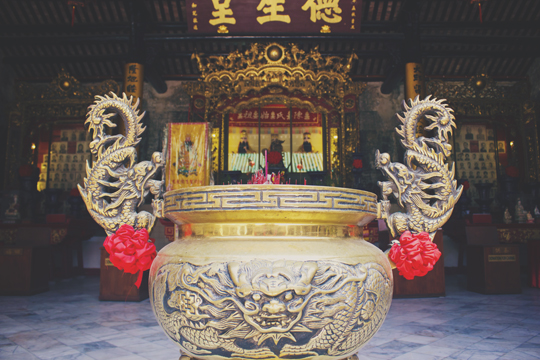 Well, already very tired, but happy to take the most out of our day, we decided to end it with one of the things we like the most, Street Food in one of the busiest streets in town, Jalan Alor, (relatively close to the financial district), we were able to try some truly traditional food!
Well, already very tired, but happy to take the most out of our day, we decided to end it with one of the things we like the most, Street Food in one of the busiest streets in town, Jalan Alor, (relatively close to the financial district), we were able to try some truly traditional food!
Since our flight was the next day, in the afternoon, and the trip to the airport was of almost an hour, we chose to just relax at the pool of Grand Hyatt, and didn’t see anything else in the city.
Therefore, we can say we just had a day to explore the Malaysian capital.
But, the reality is that many people I know just passed through Kuala Lumpur to do a scale, of mostly the same time as ours, and just enjoyed a few things in the city.
If you have more time, here are some mandatory stops (at least since what I was able to know from other travellers and locals):
– Butik Bintang (this is one of the main regions, with lots of commerce, restaurants, street food, crafts stores, clothing stores, among others. Although we did pass in some of these streets we didn’t explore much – our hotel was close).
– Changkat Bukit Bitang (a street in the region of Bukit full of bars and night life)
– Merdeka Square (the place where Malaysia’s independence was proclaimed)
and Museu Sultan Abdul Samad (a museum that tells Malaysia’s history)
– National Museum
– Thea Hou Temple (the most important Chinese temple in town – dedicated to the sky goddess)
– Petronas Towers, Menara KL (television tower with one of the best views in the city and much cheaper than the Petronas) and Suria KLCC Shopping Complex
– Chow Kit Market (traditional market, without the usual tourist overflow)
– Masjik Jamed (Oldest Mosque in town)
If you do a scale in Kuala Lumpur, take that time to absorb what you can from the city, even in a short amount of time you’re still able to get to know some things.
I won’t lie and say it’s one of my favorite cities, because it sure isn’t, but since I was doing that scale, I took the most out of it!
Where to Stay
Grand Hyatt Kuala Lumpur
Text: Cíntia Oliveira | Photos: Flavors & Senses
Disclaimer
Flavors & Senses in Kuala Lumpur witht he support of Samsonite.

